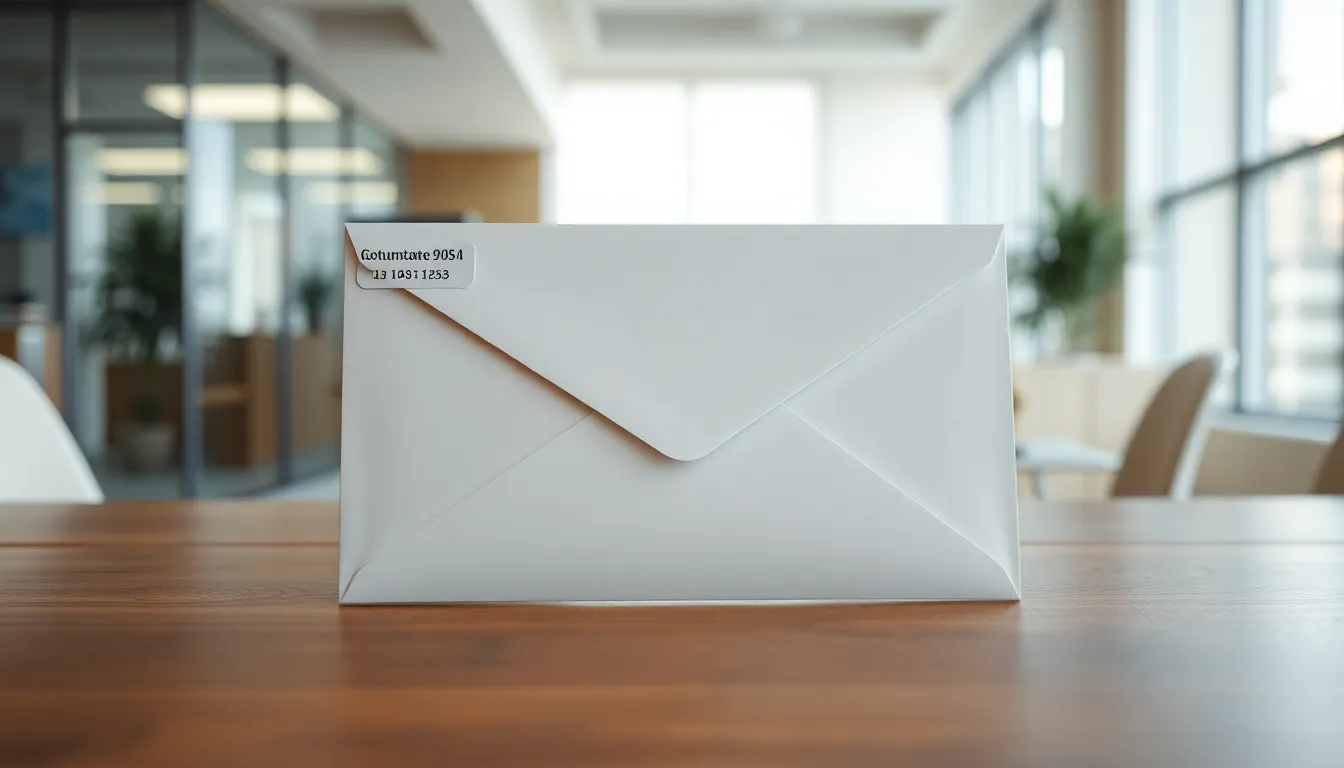When sending a letter or package, the placement of the return address on the envelope is crucial. Not only does it ensure that any undelivered mail finds its way back to the sender, but it also adds a touch of professionalism to correspondence. Understanding the right spot for the return address can make a significant difference in how your mail is perceived.
Typically, the return address should be placed in the upper left corner of the envelope. This standard positioning helps postal workers quickly identify the sender if the mail needs to be returned. However, there are nuances to consider, especially when dealing with different types of envelopes or special occasions. Knowing the best practices can enhance your mailing experience and ensure your messages reach their intended recipients seamlessly.
Table of Contents
ToggleImportance Of Return Addresses
Proper placement of return addresses is crucial for effective mail delivery and sender identification. A return address offers several key benefits, particularly in enhancing mail security and clarifying sender information.
Enhancing Mail Security
Return addresses play an essential role in mail security. They enable postal services to return misdelivered or undeliverable items, minimizing the risk of sensitive information falling into the wrong hands. Situations involving lost items or incorrect delivery can lead to data breaches if return addresses aren’t included. Besides, recipients can verify the source of the mail by referencing the return address, ensuring they trust the sender before engaging with the content.
Identifying Sender Information
Clear identification of the sender is vital in all correspondence. A well-placed return address allows recipients to quickly recognize the sender, fostering credibility and professionalism. It provides an avenue for recipients to respond to the sender, particularly in situations where direct contact details aren’t available. Including a return address enhances transparency and encourages open communication, which is particularly important for business-related correspondence.
Standard Placement Of Return Address

The standard placement of a return address is essential for efficient mailing. Proper positioning enhances the likelihood of the mail returning to the sender if undelivered.
Top Left Corner
The most widely accepted location for a return address is in the upper left corner of the envelope. This placement emphasizes visibility and accessibility for postal workers. It contains the sender’s name, street address, city, state, and ZIP code, formatted in a clear manner. This consistent positioning aids in the sorting process and speeds up the delivery of correctly addressed envelopes.
Center of the Back Flap
Placing the return address in the center of the back flap offers an alternative style, often used in formal invitations and greeting cards. This method provides a touch of elegance while allowing for decorative options on the front of the envelope. However, recipients may not always check the back flap first, which can lead to confusion. This placement is less conventional and typically suited for special occasions where aesthetics are prioritized over standard mailing practices.
Variations In Return Address Placement
Return address placement varies based on envelope types, occasions, and intended recipients. Understanding these variations ensures proper etiquette and functionality.
Different Envelope Sizes
Different envelope sizes warrant specific return address placements.
- Standard Envelopes (A5 and A6): Return addresses typically occupy the upper left corner for easy visibility.
- Larger Envelopes (C4 and C5): Return addresses can maintain the upper left corner placement; however, larger surfaces may accommodate other formats if needed.
- Small Envelopes (A2 or A3): Return addresses might appear smaller but remain in the upper left corner, ensuring clarity without overwhelming the space.
Business Vs. Personal Envelopes
Business and personal envelopes exhibit distinct conventions for return address placement.
- Business Envelopes: The upper left corner is standard. The inclusion of company logos or branding elements enhances professionalism.
- Personal Envelopes: While the upper left corner is customary, return addresses on the back flap are common for formal invitations and greeting cards, providing a refined aesthetic.
- Hybrid Uses: For semi-formal correspondence, such as holiday cards, blending elements from both personal and business styles in address placement fosters a balanced approach.
Common Mistakes To Avoid
Several common mistakes can lead to issues with return addresses on envelopes. Avoiding these errors enhances mail delivery efficiency and maintains professionalism in correspondence.
Incomplete Return Addresses
Incomplete return addresses can cause significant delays in mail delivery. Omitting essential elements, such as the city, state, or ZIP code, can prevent postal services from returning undelivered mail. It’s crucial to include the full sender’s name, street address, city, state, and ZIP code. Check that every component is accurate to ensure the mail reaches its intended destination or is returned correctly if necessary.
Incorrect Formatting
Incorrect formatting of return addresses can create confusion and hinder quick recognition. Common formatting errors include misplacing commas, using abbreviations inconsistently, or having unclear handwriting. Follow a standardized format: the sender’s name on the first line, the street address on the second, the city and state on the third, followed by the ZIP code. Using capital letters for the city and state can also improve readability, allowing for smoother processing by postal workers.
Proper placement of the return address on an envelope is essential for effective communication and efficient mail delivery. By following standard practices, such as positioning the return address in the upper left corner, senders can enhance the professionalism of their correspondence.
Understanding the nuances of return address placement for different envelope types and occasions allows for a polished presentation while ensuring clarity. This attention to detail not only aids postal workers but also fosters trust and recognition among recipients.
Ultimately, a clear and correctly formatted return address is key to a seamless mailing experience.


